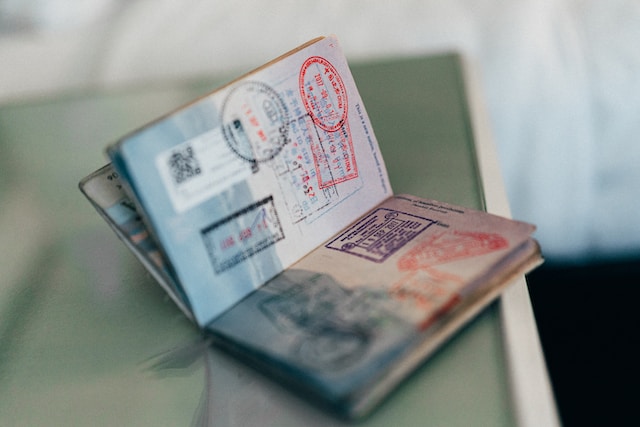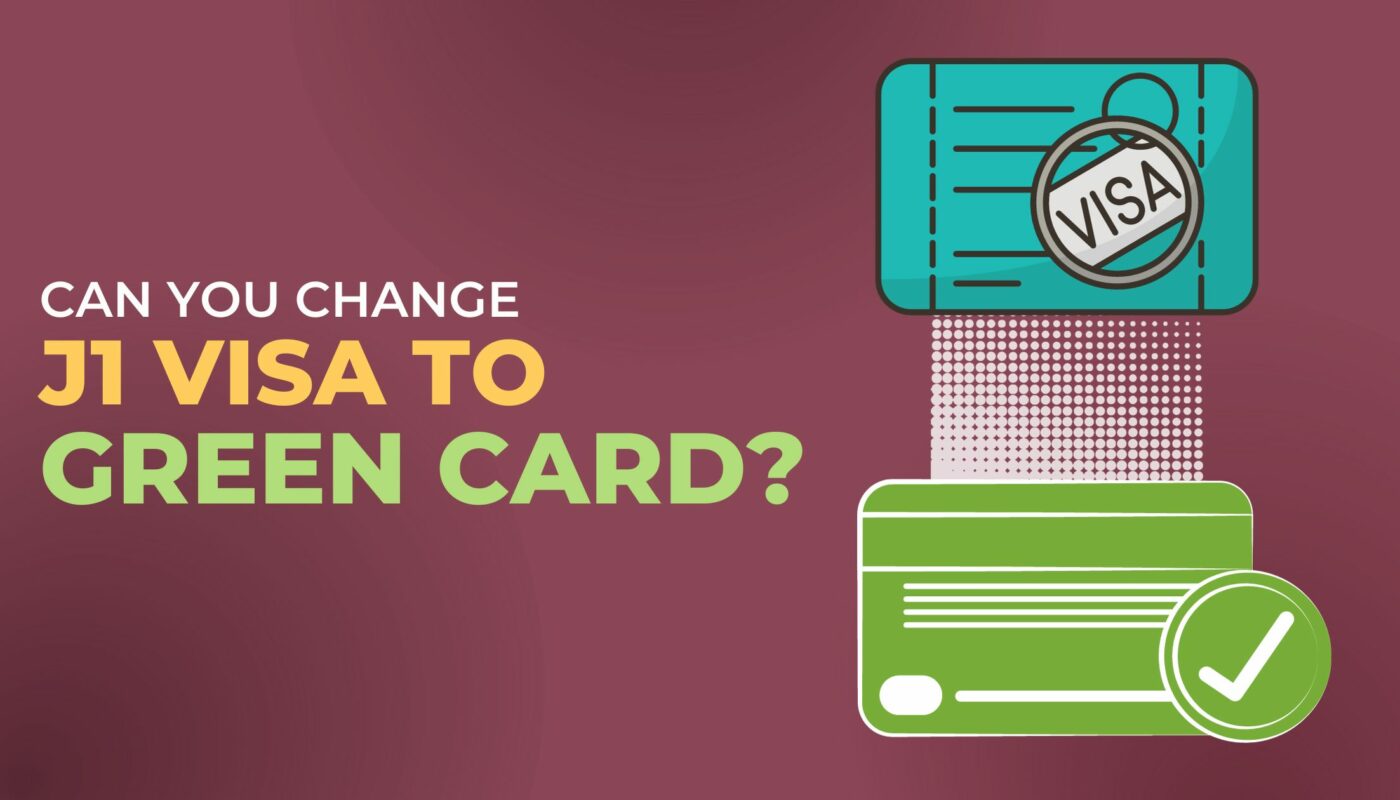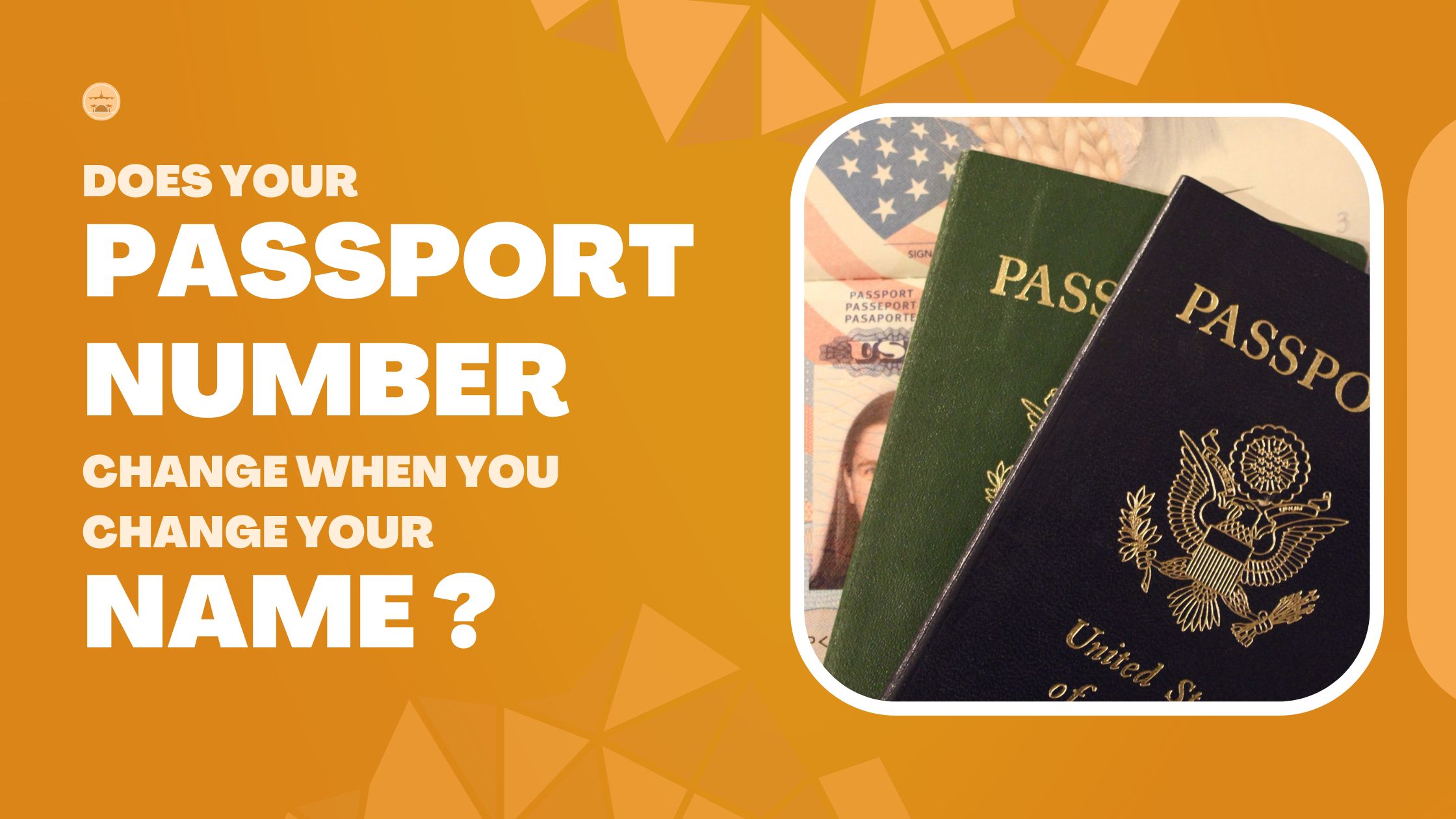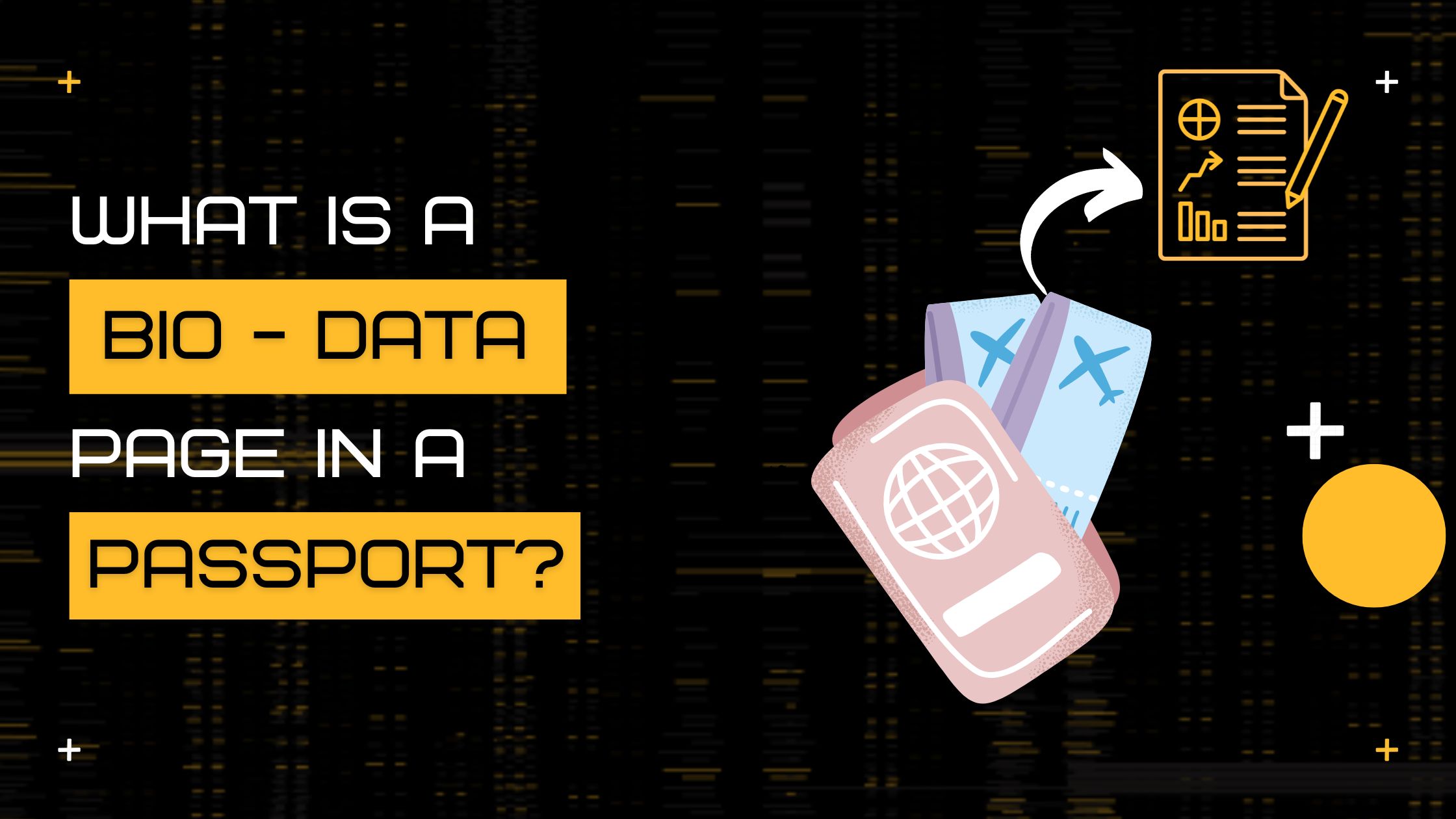Are you currently on a J1 visa and wondering, “Can you change J1 Visa to Green Card?” Many individuals on temporary visas dream of obtaining permanent residency in the United States, but the process can be complex and confusing.
In this article, we will explore the possibilities and limitations of changing your J1 visa to a Green Card, providing you with the information you need to make informed decisions about your immigration status.
Can You Change J1 Visa To Green Card?
Not all J1 Visa holders are eligible to obtain a green card. The J1 visa does not allow visa holders to pursue permanent resident status without impacting their nonimmigrant visa status. This is because it is not considered a “dual intent” visa.
However, there are certain circumstances and pathways through which J1 visa holders can apply for a green card.
For example, some J1 visa holders may be eligible for a change of status if they have a job offer from a U.S. employer who is willing to sponsor them for a green card.
Additionally, J1 visa holders who have been subject to persecution or have a well-founded fear of persecution in their home country may be eligible to apply for asylum or refugee status, which can eventually lead to a green card.
Tip 📌: If you are a J1 Visa holder, I suggest consulting with an immigration attorney or seek guidance from the U.S. Citizenship and Immigration Services (USCIS).
This can help you understand your eligibility and options for transitioning to green card status.
How To Change J1 Visa To Green Card?
An individuals must first find a qualifying pathway. This can include employment-based sponsorship, marriage to a U.S. citizen or permanent resident, or seeking asylum or refugee status. Once a pathway is identified, the individual must complete the necessary application forms, gather supporting documents, and pay the required fees.
The process can be complex and time-consuming, often requiring the assistance of an experienced immigration attorney.
The process is given in details below:
-
Step 1: Determining Your Eligibility
The first step in changing your J-1 visa to a green card is to determine your eligibility. Green cards are typically obtained through employment-based or family-based categories.
If you have a close relative who is a U.S. citizen or green card holder, they may be able to sponsor you.
-
Step 2: Finding a Sponsor
If you are applying for an employment-based green card, you will need a U.S. employer willing to sponsor you. The employer will initiate the process by filing a petition on your behalf.
Note📝: This petition serves as a request to hire you permanently and is an essential step in the green card application process.
-
Step 3: Labor Certification (if applicable)

In some employment-based green card categories, a labor certification may be required.
This process ensures that there are no qualified U.S. workers available for the job you are being sponsored for.
Your employer will need to obtain this certification before filing a petition on your behalf.
-
Step 4: Filing the Appropriate Immigrant Petition
Once you have a sponsor, whether it is a family member or an employer, they will need to file an immigrant petition on your behalf.
The specific form and category will depend on your situation.
The petition will provide information about you, your sponsor, and your eligibility for a green card.
-
Step 5: Waiting for Petition Approval
After the petition is filed, it will be reviewed by the United States Citizenship and Immigration Services (USCIS).
If approved, the case will be forwarded to the National Visa Center (NVC).
Based on one of our team member’s experience with the process, this step can take some time, so patience is key during this waiting period.
-
Step 6: Choosing Adjustment of Status or Consular Processing
If you are currently in the U.S. on a J-1 visa, you have the option to adjust your status to permanent residency while remaining in the country.
This process is done by filing Form I-485, which is the application to adjust status.
If you have already left the U.S., you will need to undergo consular processing at a U.S. embassy or consulate in your home country.
-
Step 7: Submitting Required Documents and Attending Interviews
Regardless of whether you choose adjustment of status or consular processing, you will need to submit various forms and documents, attend interviews, and undergo medical examinations.
-
Step 8: Waiting for a Decision
Once you have completed all the necessary steps and submitted all required documentation, USCIS will review your application and conduct background checks.
In my experience, this process can take several months.
If your application is approved, you will be issued a green card, granting you lawful permanent residency in the United States.
-
Step 9: Maintaining Your J-1 Status
While your green card application is pending, it is important to maintain your J-1 status.
This means complying with the terms and conditions of your J-1 visa and not overstaying your authorized period of stay.
Note📝: If your J-1 status expires before your green card is approved, you may need to leave the U.S. and go through consular processing.
This, I must say, can be a whole different ordeal so make sure to ensure that your J1 visa expiration date is afar to make the process smooth.
-
Step 10: TADA! Receiving Your Green Card
Once your green card application is approved, you will receive your green card. This card serves as proof of your lawful permanent residency in the United States.
It is important to keep your green card safe and carry it with you at all times as it is a crucial document for identification purposes.
How To Get The Marriage-Based Green Card For J1 Visa Holders?
If you are a J-1 exchange visitor in the United States and you marry a U.S. citizen or permanent resident, you have the opportunity to obtain a green card (lawful permanent resident status) through marriage. However, there are certain conditions applicable to this.
We have provided a detailed breakdown of the process and requirements involved.
Marriage To A U.S. Citizen Or Permanent Resident
When a J-1 exchange visitor marries a U.S. citizen or permanent resident, they can apply for a green card based on their marital relationship.
It is important to note that some J-1 exchange visitors may be subject to the two-year home-country residence requirement.
This requirement states that after completing their exchange program, they must return to their home country for two years.
However, being married to a U.S. citizen or permanent resident does not automatically exempt them from this requirement.
Two-Year Residence Requirement Waiver (if applicable):
If the J-1 exchange visitor and their dependents (if on J-2 visas) are subject to the two-year home-country residence requirement, they cannot immediately start the green card application process.
They must either wait for the two-year period to pass or obtain a waiver that releases them from this requirement.
Waivers may be granted based on certain grounds, such as exceptional hardship or persecution.
Tip 📌: I highly recommend you consult with an immigration attorney to understand the specific requirements and process for obtaining a waiver.
Starting The Marriage-Based Green Card Process:

Once the two-year home-country residence requirement is not applicable or has been waived, the J-1 exchange visitor can begin the marriage-based green card application process.
This typically involves filing Form I-130, Petition for Alien Relative, which is filed by the U.S. citizen or permanent resident spouse.
Conditional Green Card (if applicable):
If the marriage has been less than two years at the time of obtaining the green card, the J-1 holder may initially receive a conditional green card.
Note📝: This conditional green card is valid for two years and requires additional steps to remove the conditions.
90-Day Rule
It is important to be aware of the “90-day rule” that may apply, especially if the marriage-based green card application is filed within the first 90 days of the J-1 visitor’s entry into the U.S.
This rule is designed to prevent visa fraud or sham marriages.
Removing Conditions
If the J-1 holder initially received a conditional green card, they will need to file Form I-751 to remove the conditions within the 90-day period before the card’s expiration date.
This process requires providing evidence of the bona fide nature of the marriage.
What Is The 90-Days Rule?
The 90-day rule is a policy that immigration officers use to evaluate J-1 visa holders’ intentions when seeking permanent residence within 90 days of entry. Applying early suggests a lack of intent to return home for two years, raising concerns about their initial purpose.
While some people have been able to convince officials otherwise, it is generally difficult to do so.
In my opinion, to calculate the 90-day period, the easiest thing to do is to use the most recent arrival date stamped on their I-94 travel record.
What Is The Cost Of Transition From A J1 Visa To A Green Card?
The cost of transitioning from a J1 visa to a Green Card can vary depending on individual circumstances and the specific immigration process involved. It typically includes fees for application forms, medical examinations, biometrics, and attorney fees. Additionally, there may be additional costs such as travel expenses and document translations.
Here is a guide for you to get an average estimate:
Adjustment Of Status
If you decide to adjust your status, either you or your employer will be responsible for paying the following fees:
- Form I-140: This is the filing fee for the Immigrant Petition for Alien Worker. The current fee for this form is $700.
- Form I-485: This is the application to register permanent residence or adjust status. The cost for this form ranges from $750 to $1,450, depending on your age and whether you are filing as the principal applicant or a dependent.
To determine the exact fee you need to pay, you can refer to the payment chart on the United States Citizenship and Immigration Services (USCIS) website.
- Mandatory Biometrics: As part of the adjustment of status process, you will need to provide biometric information. This requires a fee of $85.
Consular Processing
If you choose to go through consular processing, you or your employer will be responsible for the following fees:
- Form I-140: Similar to the adjustment of status option, the filing fee for Form I-140 is $700.
- Form DS-260: This is the application for an immigrant visa and alien registration. The filing fee for this form is $230.
- Biometrics: Just like in the adjustment of status process, you will need to provide biometric information. This requires a fee of $85.
- Affidavit of Support: This is a document that demonstrates your financial ability to support yourself in the United States. The filing fee for this form is $88.
Additional Costs
It is important to consider that, in addition to these fees, there may be significant attorney fees based on the complexity of your transition.
In my opinion, engaging an immigration attorney to assist you through the process can be advantageous, but it will involve an extra expense.
Here’s is a table estimated costs for transition from J1 Visa to Green Card:
| Process | Estimated Costs |
| Adjustment of Status | Varies from $700 to $1,450 + $85 biometrics. |
| Consular Processing | $700 + $230 (Form DS-260) + $85 biometrics + $88 (Affidavit of Support). |
| Additional Costs | Attorney fees, travel expenses, document translations. |
What Is The J1 Visa To Green Card Processing Time?

Firstly, if one shifts to a nonimmigrant visa with dual intent, such as an H-1B visa, they must navigate the annual lottery, which can extend the processing period significantly. For those opting for EB-2 or EB-3 green cards, securing a PERM Labor Certification is mandatory.
This entails an initial 60-day recruitment period, followed by roughly 6 months for the Department of Labor to make a decision.
Furthermore, filing Form I-140, typically taking six months, is often required alongside the PERM certification.
Form I-485, the final step for adjusting immigration status, takes approximately 6 months as well.
If all forms are submitted concurrently, the total processing time is roughly 6 months, in my experience, plus the 60-day recruitment period for PERM.
Note📝: Consular processing is an option for expediting the process but necessitates a return to the home country for a U.S. consulate interview.
Here’s is a table on J1 Visa to Green Card processing times:
| Processing Stage | Estimated Time |
| PERM Labor Certification | Initial 60-day recruitment period + 6 months for DOL decision. |
| Form I-140 | Approximately 6 months. |
| Form I-485 | Approximately 6 months. |
| Total Processing Time | Roughly 6 months + 60-day PERM recruitment period. |
What Are The Most Common Problem Faced when Transitionaing From J1 Visa To Green Card?
One of the most common problems faced when transitioning from J1 visa to green card is the two-year foreign residence requirement. This requirement stipulates that an individual must spend two years in their home country before they can apply for a green card.
This can be difficult for some individuals, as they may have built lives and careers in the United States during their J1 visa period.
Additionally, the US State Department has the authority to require a waiver of this requirement for certain individuals.
Another issue faced when transitioning from a J1 visa to green card status is immigration intent.
All applicants must demonstrate that they intend to remain in the United States permanently. In my opinion and having conversed with a few people who have tried to obtain a green card, it can be difficult to prove this intent.
In order to satisfy this requirement, individuals must show that they have close family or business ties to the United States, or that they have a specific plan for their future in the country.
What Are The Different Options To Obtain A Green Card?
One option is through family sponsorship, where a close relative who is a U.S. citizen or Green Card holder can petition for you. Another option is through employment, where a U.S. employer can sponsor you for a Green Card based on your skills and qualifications.
Additionally, there are options for refugees, asylum seekers, and individuals who have won the Diversity Visa Lottery.
The options are elaborated on below:
Option 1: File the Immigrant Petition and J-1 Waiver Simultaneously
The first option available is to file for an immigrant petition and the J-1 waiver at the same time. This process requires applicants to submit both forms simultaneously.
The advantage of this approach is that it allows applicants to save a significant amount of time and effort since they only have to file one set of documents.
Option 2: File the J-1 Waiver First and then File the Immigrant Petition
The second option for obtaining a Green Card is to file the J-1 waiver first, and then submit an immigrant petition after receiving approval of the waiver.
This approach requires applicants to wait until their waiver is approved before they can submit the immigrant petition.
In my opinion, the advantage of this approach is that it gives applicants more time to prepare their petitions and ensure all documents are in order.
What Is a J-1 Waiver?
A J-1 waiver is a process that allows individuals on J-1 exchange visitor visas to avoid the two-year home-country residence requirement typically associated with the visa. J-1 visa holders must return home for 2 years post-exchange program before pursuing other visas or US permanent residency (green card).
Here are the three main ways to obtain a J-1 waiver:
-
No Objection Statement
You can request a “No Objection Statement” from your home country’s embassy or consulate in the United States. This statement indicates that your home country does not object to you pursuing permanent residency in the U.S.
Note📝: This option may not be available for J-1 exchange visitors with medical education and training purposes.
-
Exceptional Hardship
If you can demonstrate that your departure from the U.S. for two years would cause significant hardship to your spouse or children who are U.S. green card holders or citizens, you may be eligible for a J-1 waiver based on exceptional hardship.
-
Persecution
If you can prove that returning to your home country would subject you to persecution based on your political affiliations, religion, or race, you may be eligible for a J-1 waiver based on persecution.
In addition to these options, there are specific considerations for J-1 exchange visitors in the medical field.
They can seek support from a designated State Public Health Department to obtain a waiver.
So, how do you do this? In my experience, the best way to stay in the good books of the State Public Health Department is to agree to work in an underserved area or a healthcare facility that has a shortage of medical professionals.
Here’s a table on J-1 Waiver eligibility criteria:
| J-1 Waiver Basis | Eligibility |
| No Objection Statement | Request from home country’s embassy or consulate. |
| Exceptional Hardship | Demonstrate hardship to U.S. citizen or green card holder family members. |
| Persecution | Prove persecution risk based on political, religious, or racial factors. |
| Medical Field | Seek support from State Public Health Department. |
Option 3: File the Immigrant Petition First and then File the J-1 Waiver
The third option for obtaining a Green Card involves filing an immigrant petition first, and then submitting a J-1 waiver after the petition is approved.
If you ask me, I believe this approach gives applicants more time and flexibility to prepare the necessary documents and make any adjustments before submitting their waiver.
Here’s a table with different options you can choose:
| Transition Option | Description |
| Option 1: Simultaneous Filing | File immigrant petition and J-1 waiver together. |
| Option 2: J-1 Waiver First | File J-1 waiver before immigrant petition. |
| Option 3: Immigrant Petition First | File immigrant petition before J-1 waiver. |
Conclusion
In conclusion, changing a J-1 visa to a green card is possible, but it involves a complex and multi-step process. Eligibility, timing, and the specific visa category play crucial roles.
Overcoming challenges like the two-year home-country residency requirement and securing employment sponsorship can be difficult.
Staying informed about changing immigration policies is essential. Seek legal guidance and plan carefully for a smoother transition.
It’s a journey that requires patience, diligence, and compliance with U.S. immigration laws.







